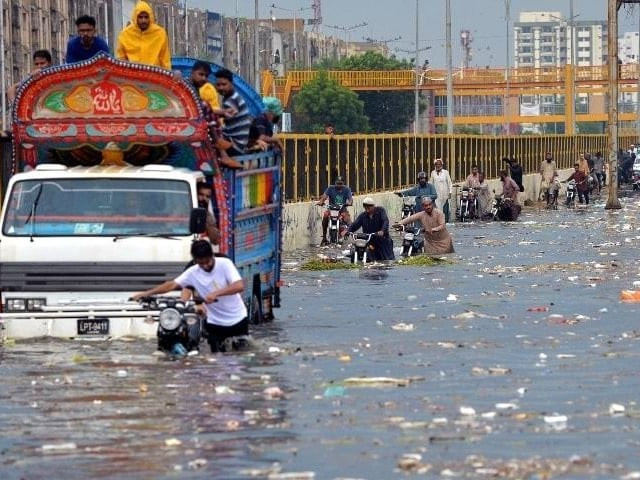Rainfall expected during Eid in Karachi
Sindh likely to receive 17% less rainfall than average this monsoon season, according to PMD forecast

The Pakistan Meteorological Department (PMD) has forecasted rain accompanied by dust and thunderstorms in Karachi on the second day of Eidul Azha. Moreover, various districts in rural Sindh are likely to experience moderate to heavy rainfall until June 30.
Tuesday saw warm weather in the metropolitan city, with increased humidity due to the absence of sea breeze. The maximum recorded temperature reached 37 degrees Celsius, while it felt even hotter.
According to the PMD’s Early Warning Centre, the city is expected to have slightly hot and humid weather with partial cloud cover on the first day of Eid. Light rain and drizzle are expected during the night and morning hours over the next two days.
On Tuesday, Karachi experienced hot and humid weather, with a humidity level of 63%. The sea breeze subsided in the afternoon, intensifying the heat. The maximum recorded temperature was 37 degrees Celsius. In Dadu and Jacobabad districts of rural Sindh, the mercury climbed to 43 degrees.
Also read Death toll from rains in Punjab hits 20
The PMD predicts moderate to heavy rainfall accompanied by dust and thunderstorms in Qamber Shahdadkot, Dadu, Jacobabad, Shikarpur, Ghotki, Sukkur, Khairpur, Nowshero Feroze, Matiyari, Larkana, Shaheed Benazirabad, Tando Muhammad Khan, Tando Allahyar, and Mirpurkhas until June 30.
Meanwhile, the PMD has released a review of the monsoon climate for July to September, indicating that Sindh is likely to receive 17 per cent less rainfall than the average. Furthermore, certain areas in Sindh, Balochistan, and lower Punjab may experience heatwaves due to higher-than-expected temperatures. The melting glaciers pose an increased risk of flash floods.
Based on the current assessment of monsoon weather, most areas of the country are expected to receive normal rainfall during the monsoon season, with slightly above-average rainfall projected for upper Punjab, Azad Jammu and Kashmir, and Khyber-Pakhtunkhwa. Conversely, the southwestern parts of Sindh and Balochistan may experience below-normal rainfall.
Central and southern Punjab, Sindh, and Balochistan may face water shortages in cotton-growing regions due to slightly below-normal rainfall. Seasonal crops, vegetables, and gardens in these areas may also experience water scarcity. Drought conditions may arise in Sindh and Balochistan regions due to lower-than-normal rainfall.



















COMMENTS
Comments are moderated and generally will be posted if they are on-topic and not abusive.
For more information, please see our Comments FAQ